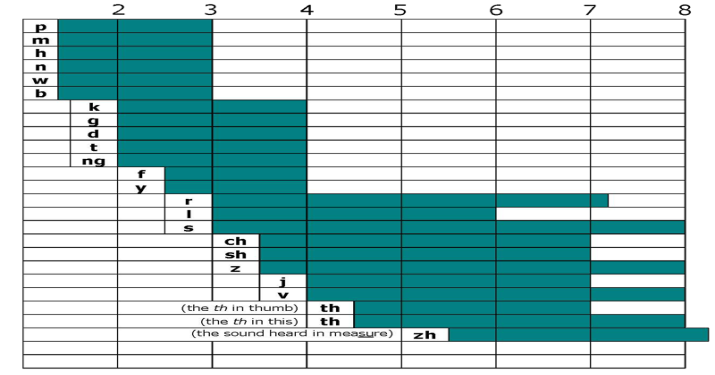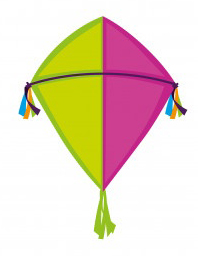Situation A
Kate : Mom, tate want to tate the blue tar
Mom: Oh, Kate wants to take the blue car
Ok, please wait for a while
Kate: Otey mom
Situation B
Kate: Granny, tate want to tate the blue tar
Granny: What? What do you want?
Have you ever experience any of the above situations?
Mum or dad who is always with their kids will usually able to understand their kid; even when the kid mispronounces some word. People who are not familiar with the kid may have difficulty to understand them.
The above example shows a sound that is affected or mispronounced. In the above situation, the kid change the /k/ sound to /t/ consistently. Can you imagine if more than a sound are mispronounced? The kid’s speech will be hard to understand then!
In this article, we will discuss how to teach a kid to pronounce /k/ and /t/ sound. Both of the sounds can occur in the initial, medial or final word position.
Words with phoneme /k/ and /g/
|
Phoneme |
Initial word position |
Medial word position |
Final word position |
|
/k/ |
knife |
locker |
look |
|
/g/ |
goat |
yoga |
bag |
Video how to pronounce /k/ and /g/ sound
How do you pronounce /k/ and /g/?
There are several part of mouth moved when we speak. For /k/ and /g/, the back of the tongue and back side of the soft palate plays important role and the following happens:
|
Phoneme |
Lips and jaw |
Tongue |
Voice box |
|
/k/ |
The lips are slightly in an open position, and the jaw at a stable position |
*The back of the tongue touch the back side of the soft palate |
The voice box is not vibrated |
|
/g/ |
The voice box is vibrated |
What are the common type of error with /k/ and /g/?
There are 2 types of errors that involve /k/ and /g sound/:

Source: http:// www.talkingtails.net
-
The sound is not pronounced by the kid. It will be deleted, results in incomplete pronunciation
-
The sound is substituted. It is usually substituted to a sound with similar characteristic with /t/ and /d/. When this happens, the pronunciation of a word will differ, and the intended meaning of the word will changed.
The following show example of error that involves /t/ and /d sound:
|
Type of error |
/k/ |
/g/ |
|
Deletion |
/ knife / ? /_ nife / |
/ goat / ? /_oat/ |
|
Substitution |
/ knife / ? / tnife / |
/ goat / ? /doat/ |
Each sound is acquired by stages. The /k/ and /g/sounds are acquired at 2-4 years old. The sound deletion error is considered normal for age 3, and sound substitution error is normal up to age 4 years old. If your kid is 2 years old and mispronounce the sounds, please don’t worry!
What are the strategy to teach /k/ and /g/?
There are various strategies that you can do to teach a kid to pronounce /k/ and /g/. These strategies are used during the initial stages of teaching the intended phoneme. Among the strategy that you can use are:
- Visual cue
- Use a huge mirror so that the kid can look his/her own mouth movement, while they are trying to pronounce the /k/ and /g/.
- Sit in front of the kid so that they can see our mouth movement while we are trying to pronounce the sounds.
- Tactile cue
- Touch the back of the tongue and the back side of the soft palate with tongue depressor.
- Put jam or honey to the back of the tongue and the back side of the soft palate
- Touch the upper part of the neck as a cue for the kid to elevate the back of the tongue while trying to pronounce /k/ and /g/.
- Instruction of placement
- Use a drawing or a model of a mouth to help kids to understand how to place their tongue appropriately.
- Ask the kid to put the back of the tongue to the back side of the soft palate and released it downward.
- Place your palm near your lips, to feel puff of air coming out from the mouth
- Say the sound together with the kid
How to start?
Speech Sounds are acquired in stages. For example, at age 2, a kid will be able to pronounce /p/ and /b/ and other sounds.
When we teach a kid to pronounce a new sound- we have to do it from the basic stage. You can move to the next stage if a kid show 80% correct responds in a stage. Refer to article let’s play with /t/ and /d/ for description.
What are activities to teach /k/ and /g/?
Refer to article let’s play with /t/ and /d/ for activities that you can do for teaching a kid to say the sounds correctly. Basic concepts for teaching are- the kid must be ready and enjoy the therapy session!
Words with /k/sound
|
Initial word position
|
Medial word position
|
Final word position
|
|
Kite
 |
Monkey
 |
Cake
 |
Words with /g/ sound:
|
Initial word position
|
Medial word position
|
Final word position
|
|
Girl
 |
Jogging
 |
Bag
 |
References
- Developmental Norms for speech and language. Diperoleh daripada http://www.asha.org/slp/schools/prof-consult/norms/, pada 3 September 2015.
- English pronounciation, lesson 22. Diperoleh daripada http://www.english247.net/english-pronunciation-lesson-22-consonant-k/ pada 7 September 2015.
- Table 3 – Elimination of Phonological Processes. Diperoleh daripada http://www.speech-language-therapy.com pada 3 September 2015.
| Last Reviewed | : | 28 August 2020 |
| Writer / Translator | : | Rahimah bt. Yunus |
| Accreditor / Reviewer | : | Nadwah bt. Onwi |







